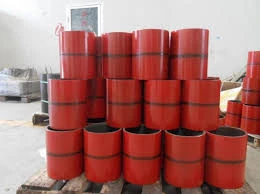- Afrikaans
- Albanian
- Amharic
- Arabic
- Armenian
- Azerbaijani
- Basque
- Belarusian
- Bengali
- Bosnian
- Bulgarian
- Catalan
- Cebuano
- Corsican
- Croatian
- Czech
- Danish
- Dutch
- English
- Esperanto
- Estonian
- Finnish
- French
- Frisian
- Galician
- Georgian
- German
- Greek
- Gujarati
- Haitian Creole
- hausa
- hawaiian
- Hebrew
- Hindi
- Miao
- Hungarian
- Icelandic
- igbo
- Indonesian
- irish
- Italian
- Japanese
- Javanese
- Kannada
- kazakh
- Khmer
- Rwandese
- Korean
- Kurdish
- Kyrgyz
- Lao
- Latin
- Latvian
- Lithuanian
- Luxembourgish
- Macedonian
- Malgashi
- Malay
- Malayalam
- Maltese
- Maori
- Marathi
- Mongolian
- Myanmar
- Nepali
- Norwegian
- Norwegian
- Occitan
- Pashto
- Persian
- Polish
- Portuguese
- Punjabi
- Romanian
- Russian
- Samoan
- Scottish Gaelic
- Serbian
- Sesotho
- Shona
- Sindhi
- Sinhala
- Slovak
- Slovenian
- Somali
- Spanish
- Sundanese
- Swahili
- Swedish
- Tagalog
- Tajik
- Tamil
- Tatar
- Telugu
- Thai
- Turkish
- Turkmen
- Ukrainian
- Urdu
- Uighur
- Uzbek
- Vietnamese
- Welsh
- Bantu
- Yiddish
- Yoruba
- Zulu
Petroleum Tubing Connectors for Enhanced Oil and Gas Extraction Efficiency
Understanding Petroleum Tubing Couplings Essential Components in Oil and Gas Operations
In the world of petroleum extraction and processing, the efficient transportation of crude oil and natural gas from wellheads to refineries is crucial. One of the key components facilitating this process is the petroleum tubing coupling. A tubing coupling is a mechanical device used to connect sections of tubing in a pipeline system, ensuring the seamless transfer of fluids under high pressure and temperature. In this article, we will explore the significance, types, applications, and technical considerations associated with petroleum tubing couplings.
The Significance of Tubing Couplings
Petroleum tubing couplings play an indispensable role in the oil and gas industry. They provide a secure and efficient connection between sections of tubing, which is essential for maintaining the integrity of the pipeline. The coupling allows for easy installation and replacement of tubing sections, thus minimizing downtime and enhancing operational efficiency. Furthermore, acceptable coupling performance directly impacts the safety and reliability of petroleum operations, as any failure in the coupling could lead to leaks, loss of product, or environmental hazards.
Types of Tubing Couplings
There are several types of tubing couplings used in the industry, each designed for specific applications and conditions
1. Non-Premium Couplings These are standard couplings that meet basic industry specifications. They are suitable for many general applications, particularly in low-pressure systems.
2. Premium Couplings Engineered for high-performance contexts, premium couplings typically exhibit enhanced mechanical properties, such as improved strength and resistance to corrosion. They are often used in demanding environments, including deep-water drilling and sour gas extraction, where the risk of environmental stressors is greater.
3. Threaded Couplings These couplings feature threaded ends that allow two sections of tubing to be twisted together. This design is straightforward and effective for many conventional applications, although the tightness of the seal and alignment must be monitored.
4. Welded Couplings In high-pressure situations, welded couplings offer a robust connection that minimizes the risk of leaks. These couplings are favored in pipelines where pressure fluctuations are common, as the welded joint can hold up against greater stress without separating.
petroleum tubing coupling

5. Slip Joints Designed to allow for thermal expansion or movement in the pipeline, slip joints provide flexibility and accommodate changes in temperature while maintaining the integrity of the connection.
Applications of Tubing Couplings
Petroleum tubing couplings are used in various applications, including onshore and offshore drilling operations, gas processing plants, and transportation pipelines. In offshore drilling, for instance, the corrosive nature of seawater and high pressure necessitate the use of premium couplings that can withstand extreme conditions. Similarly, in shale gas extraction, where horizontal drilling techniques are employed, specialized couplings that maintain strength under bending and torsional loads are of utmost importance.
Technical Considerations
When selecting tubing couplings, it is crucial to consider several technical factors, such as
- Material Compatibility Couplings should be made from materials compatible with the specific fluids being transported to avoid corrosion and degradation. - Pressure Ratings The pressure rating of the coupling must exceed the maximum expected pressure within the pipeline to ensure safety and reliability.
- Temperature Range Couplings should be suitable for the temperature conditions of the operational environment, as extreme temperatures can affect material properties.
- Installation Requirements Ease of installation is another critical factor, including how the couplings can be connected or disconnected in the field.
Conclusion
In summary, petroleum tubing couplings are fundamental components in the oil and gas industry, ensuring the efficient and safe transportation of hydrocarbons. With various types available to suit specific operational needs, selecting the right coupling hinges upon a careful consideration of the application's unique demands. As the industry continues to evolve with new technologies and challenges, the role of tubing couplings will remain pivotal in maintaining operational integrity and safety in petroleum production and processing.
-
Tubing Pup Joints: Essential Components for Oil and Gas OperationsNewsJul.10,2025
-
Pup Joints: Essential Components for Reliable Drilling OperationsNewsJul.10,2025
-
Pipe Couplings: Connecting Your World EfficientlyNewsJul.10,2025
-
Mastering Oilfield Operations with Quality Tubing and CasingNewsJul.10,2025
-
High-Quality Casing Couplings for Every NeedNewsJul.10,2025
-
Boost Your Drilling Efficiency with Premium Crossover Tools & Seating NipplesNewsJul.10,2025







